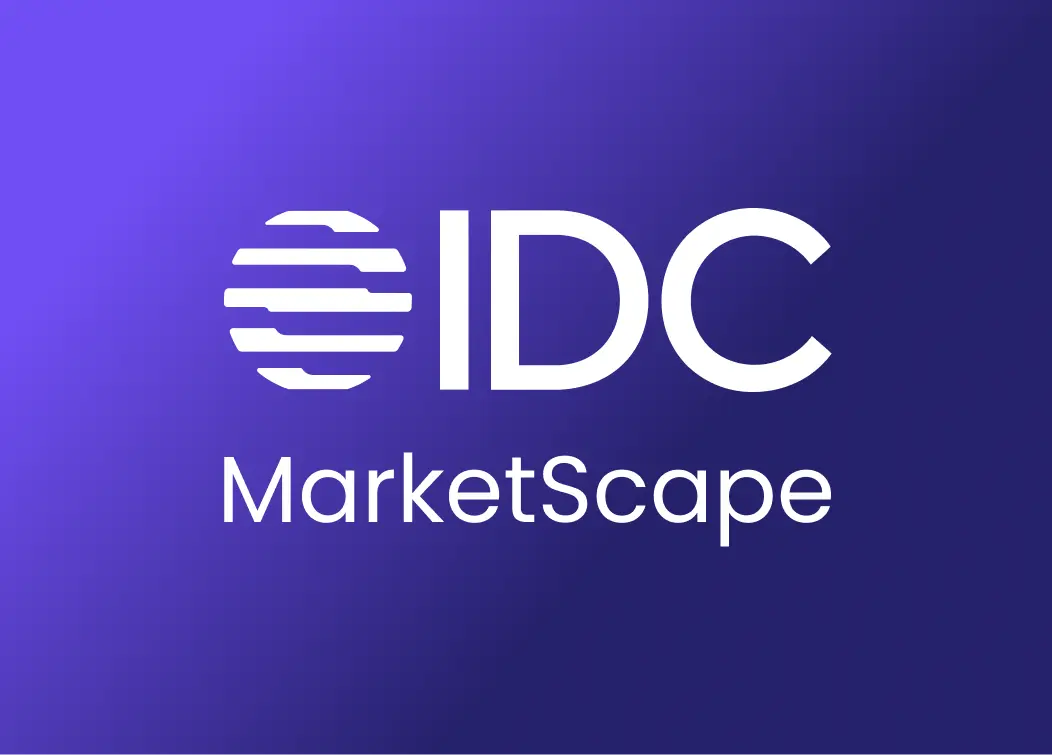A Blueprint for Small Business Lending

Introduction
WSFS Bank of today is one of the leading community banks in commercial lending, but that wasn’t always the case. Spotting an opportunity in the market due to a wave of M&A, the Bank hired a group of successful Commercial Lenders and in 2002 hired Glenn Kocher as Chief Credit Officer. The Commercial team was made up of strong contributors who grew the commercial market share to 34% and helped grow bank assets by over three times. Not satisfied with a successful “first career,” Glenn decided to take on another challenge in leading the bank’s retail lending department, including small business lending.
We enjoyed learning about Glenn’s passionate approach to supporting small businesses. His experience can serve as a playbook for executives looking to grow a small business banking unit.
“We focused on building a ‘loan manufacturing plant’ on the operations side. We wanted to make sure that our sales team was focused on selling and originating loans instead of servicing them.”
Glenn Kocher, Former Chief Credit Officer & Director of Retail Lending, WSFS Bank

Interview
Ben Fried: I’d love to start by talking about your rise to chief credit officer (CCO) at WSFS. What were the most valuable learning experiences throughout your career that helped shape your philosophy as CCO?
Glenn Kocher: My career was with three different banks. I started out at a small $1B community bank, and after 10 years, I moved to PNC, where I spent nine years. So I had those two experiences and was able to weave the community bank and large bank experience together at WSFS.
I’ve always been interested in how banking helps businesses achieve their goals. Many people in credit are solely focused on the credit risk, but I always felt like I had a bigger view of things.
When I got to WSFS, many of the local banks at that time had been purchased by large companies. WSFS was primarily a real estate lender at that time. They wanted to grow at a very fast pace in commercial banking. I came in together with a team of five other people, and we all knew each other well.
The credit culture was really good. It was very similar to a smaller bank but delivered in a much more sophisticated manner, as we had experience with topics such as loan structuring and portfolio analysis. That level of sophistication wasn’t really tried by community banks before.
What did you bring with you from each of the previous banks in terms of building out the credit organization?
We took a corporate-level look at credit and processes delivered in a faster-paced environment.
Our focus from the beginning was companies with sales of $5 million or more, borrowing $2 million to $15 million. As the bank grew, the relationships grew, but we did always have a culture of limiting credit exposure to one borrower to $30 million to $40 million. The margins above that are too thin, and we could not deliver our service levels to big companies on such thin margins. We never wanted to have that much invested in one company.
Portfolio management and maintaining a good credit policy were essential. One of the keys to our success was clear communication, especially as we brought on new lenders and grew the company. Everybody needed to understand our philosophy: to keep things simple. Nobody is going to read a hundred-page loan policy, so you have to get it down to something pretty simple. This is where I used my experience with a large well-run organization that knows how to streamline that process.
Let’s fast-forward a few years. You are in a respected C-suite position with a great bank and decide to make a change and take over retail lending, which includes small business and SBA lending. What led you to make that change, and are you happy you went down that path?
As I approached 60 years old, I started thinking about additional opportunities to make a mark and do something important. After 13 years as chief credit officer, I felt ready for a new challenge. I was often brought in to advise entrepreneurs about how to better manage their businesses, so I thought it was time to run a business myself.
And then the opportunity came along. I was able to stay down the hall from my successor in credit and offer my assistance to the team when it was needed.
In your time as CCO, you helped triple the bank’s assets. What was the market share of the bank in the small business sector when you joined and why did you see it as an opportunity?
The bank had mostly grown in its core market of Delaware. We were the leading business bank and had a 34% market share for businesses, with sales between $5M-100M. Our main competition had been acquired and wasn’t performing well — that was an opportunity for us.
So commercial had a large market share, but the bank only had a 22% market share in the small business sector (sales under $5m). I saw this as a big opportunity and felt that we were not effectively serving small businesses or gaining the market share that our business banking brand allowed.

How did you streamline the product offerings and what approach did you take to loan origination?
When I was CCO, I had a small team doing underwriting for small business loans, despite us not being in the retail bank. But we didn’t control the business and had limited control over operations.
So when I took over, I took the small business underwriting and operations teams with me so I could control the entire business. The Bank was comfortable with this approach in the Retail Lending segment and a Small Business portfolio has similar granularity.
We adopted a mantra of “simple, easy, quick, and sure.” One area we did this in was streamlining our product offerings to just four: lines of credit, term loans, mortgages, and credit cards.
We focused on building a “loan manufacturing plant” on the operations side. We wanted to make sure that our sales team was focused on selling and originating loans instead of servicing them.
How did you align incentives for the credit and sales team and what impact did this have on the growth of the small business portfolio?
When I joined, the sales team had a goal of each loan officer originating $5M in loans a year each, but they weren’t meeting that goal. However, with the new approach, that same team was hitting $10M/loan officer in new loan originations the very next year. We were able to more than double our total originations from $42M to $100M million in just a couple of years.
We provided administrative support to the sales team so that they could focus on meeting customers and potential customers. We were able to commit to small loans in 24 hours and larger loans of up to $1.5M in under five days — much faster than other banks. We would communicate deal structure and terms even before underwriting to make sure we were on the same page as the customer.
In the end, we put proper incentives in place that aligned with both the operations team’s goals and the salespeople’s individual goals. They were all really focused on getting credit to the small business community.
And we gave the lenders prestige. We hired people that wanted a different career. We wanted the true salespeople and found some of them in the branch systems. We weren’t the JV or feeder system into commercial lending. We hired salespeople that were looking for a different career. And we matched the incentive structure that commercial banking had so that we could attract the best lenders.
As a result, we gained respect across commercial lending and grew our market share to equal the commercial group.
The commercial group even started referring small business customers to us, whereas beforehand they hadn’t had the faith or confidence in the Small Business team. In return, as our customers grew we transitioned them to Commercial.
What marketing or sales strategies did you implement to double your sales team’s goals and achieve success?
Our approach to running the business was focused on efficiencies and enhancing the customer experience. One key component was simplifying our product offerings. Our low operating costs allowed us to make strong offers on rates early on.
We also made a point to hold our rates if we couldn’t close the loan for a month or two, as we wanted to ensure that we were going to execute the loan the way it was offered. These types of practices were crucial in building trust with our customers.
In terms of sales and marketing strategies, we utilized our branches and advertised to customers who regularly visited there. We also contacted advisor groups, insurance agents, CPAs, and attorneys and created a new offer every month to keep our products top of mind. These were just simple PDF flyers that a banker sent out to their distribution list.
This approach helped create a reason for these groups to bring up our offerings to their clients on a regular basis. This simple yet effective approach, combined with our strong brand reputation as the number one business bank in Delaware, helped drive our sales.
Other than lending volumes, what else was impacted by the small business growth you led?
My boss was the head of retail, so deposits were #1 on his incentive scorecard. Early on, he mentioned that 75% of our small business customers didn’t even utilize WSFS credit products.
My view was that they weren’t borrowing from us, but they were borrowing from someone. At that time, American Express was the largest lender in Delaware. We continued focusing on loan growth with one simple rule to align deposit growth: All loan proceeds were required to be deposited in a WSFS checking account.
We were growing loans at 20-30% and continuing to focus on lending because that’s where we could get the relationship. I felt comfortable putting business deposits on my scorecard too, and small business deposits doubled the growth in consumer deposits.
Over time, small business customers mature and deposit relationships grow, particularly as new customers are added. And as loans were paid down, the portfolio matured and deposits became more significant.
Let’s talk for a moment about your unit economics. How did you cut down the cost of setting up a loan, and where did you end up in terms of making a profit?
Our initial strategy was to simplify the workflow process and identify tasks that did not contribute to our goal of generating revenue. We recognized the importance of maintaining good relationships with regulators, but we also found ways to make compliance more efficient and effective. We used technology to streamline our processes. We offloaded tasks from our higher-priced salespeople.
We even reassessed our underwriting criteria, asking if we needed two years of tax returns and a cash flow analysis if there were other metrics that could support a decision on smaller credits.
We looked at everything to streamline a loan through the process.
Another approach we took was to charge small business clients a 1% all-in loan fee for loan origination. We felt that providing a good service, structuring the loan correctly, and closing it on time would be worth a small fee for our customers. Most small business people looked at that and thought it was a great deal, especially as we finance those fees into the loan. And we worked hard to make sure our origination costs didn’t exceed fee income.
We didn’t add any staff when we went from $42M to $100M per year. Our approach was simple: We wouldn’t fire or hire anyone; instead, we would do more with what we had.

A lot of the success you’ve mentioned wasn’t due to innovative technology. It was your success in running a profitable business. So where do you see technology playing a role when it comes to small business lending?
We initially didn’t include much technology in our workflow analysis when our volume increased. But we did do a lot of studying. It was an entrepreneurial environment, so we talked to other entrepreneurs. In fact, we had equity ownership in some loan originators. We observed how they used technology in their businesses.
At some point, we decided that we had enough volume to make an investment in technology. Not just streamlining our workflow, but automating our workflow.
Eventually, we decided to make a significant investment in a flexible workflow process that would streamline and automate our operations, giving management more insight into the pipeline and allowing us to identify bottlenecks and find ways to improve efficiency.
We chose a flexible workflow system, which was cost-effective as it was built by a third party and shared by many other institutions. We believe that we were ahead of the game in terms of product design and realized that small business loans are products and change infrequently.
Interestingly, the commercial team had trouble adapting to the same software, while our team embraced it. This highlights the importance of considering the team’s ability to adapt to new technology in any workflow automation process. I assume it was because we were already streamlining processes internally, so the technology didn’t replace the business, but augmented it.
Having that technology in place was instrumental in processing loans quickly during the PPP program. We processed over a thousand loans in just a couple of weeks, all done through online means such as DocuSign and video calls. This prevented fraud and allowed for fast delivery. Our SBA team was familiar with the SBA portal and was able to help build a processing system with partners, which made the process smoother for everyone. Without the technology, the process would have been difficult.
What advice would you give to small business lending organizations on how to improve credit availability and what should they look for as opportunities?
One key piece of advice I’d give to small business lenders is to make sure they’re charging enough for their product. Small business customers are not as price sensitive as larger ones, and they value assurance of execution at a fair price.
It’s important to understand the risk involved and to price the loans accordingly. Our losses on small business loans were 50 basis points. When we had a default without real estate collateral, we lost everything. We never collected on inventory or receivables from a small business. You need to look at those loans as unsecured, and you need to get paid for that. You also don’t need to spend a long time analyzing collateral. It’s not going to be worthwhile in the end.
So our prices were always 100–200 basis points higher than commercial. We just needed to be able to deliver that in a cost-effective manner. And our return on total assets was bigger on a dollar-invested basis than commercial! We ended up at around 10% of the bank’s assets, so it was significant.
The same idea is true in servicing. When I was in small business lending, banks were offering mortgage loans for owner-occupied properties with a 20-year term, but with a five-year maturity. We never offered that. Our loans were for the full 20-year term with renewable rates every five years to reflect our cost of capital. Six months before maturity, customers received a letter with a new fixed rate if they wanted it. 95% of customers accepted the new rate, no questions asked.
It’s actually a simple business. Be honest and offer a good product.
Well you make it sound simple. Thank you so much for the time, for the wisdom, and for sharing your lessons learned so other folks can learn as well.
Glenn Kocher - Bio
Glenn had a 40-year career with three financial institutions including small, moderate, and large banking institutions. His career was largely in Credit Risk Management serving as Regional or Chief Credit Officer. He holds a CPA certificate and a degree in Business Administration from Drexel University.
Glenn retired from WSFS Bank in 2020. During his 18 years at WSFS Bank, he served as the Chief Credit Officer, Director of Small Business Banking, and Chief Retail Lending Officer. WSFS Bank grew from a savings bank with $1.5 billion in assets to a commercial bank with $13 billion in assets at his retirement. The Bank’s asset growth was largely driven by Business Banking in Delaware and Philadelphia markets. The Bank grew from a nominal market position to #1 in market share (34%) in both Commercial and Small Business lending in Delaware. Last year, WSFS Bank was the largest provider of SBA 7A loans in dollars in both Delaware and the Philadelphia districts.
“Working at WSFS Bank was a fantastic experience both professionally and personally, with many rewards beyond financial success. We helped many entrepreneurs achieve their goals and created opportunities for their employees. We assisted the non-profit sector by providing volunteers, financial assistance, and banking services/loans. I worked with many great teammates and made many trusted friends, never compromising integrity.”

















.webp)


.webp)

.webp)





.webp)















